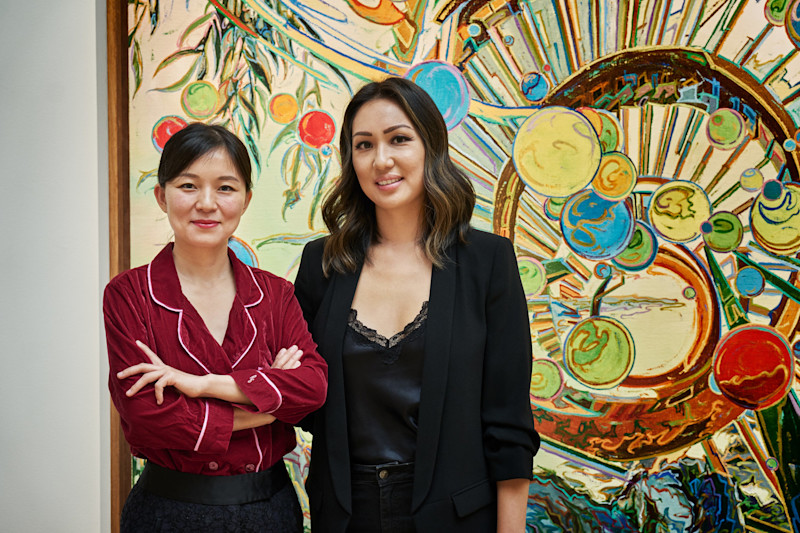Systema Naturae — Elin Unnes in conversation with Christine Ödlund
Interview
February 19, 2020
- Elin Unnes

What is an allotment? Something dry, bureaucratic?
Sure. But it can also be something esoteric, a symbol for all of existence. A microcosm. A little slice of land handed to you; your allotted place on Earth, for you to take care of as best you can, for as long as you can. Until you yourself turn to earth. It can be a place where the thin veil of reality is suddenly yanked away and nature exposes itself in all of its dizzying complexity. A place for contact — asemantic, extra-human contact with God-knows-what — but also for contact with other gardeners. Like Christine Ödlund, for example. Our paths crossed on just such a plot of land, in a community garden just outside of Stockholm: my allotment. For ten years, I’d been cultivating my allocated plot, in total, transcendental bliss. When the time came to seek, eh, greener pastures, I couldn’t make myself abandon the land that had nourished me. At the same time, taking care of it — the way it really deserved — meant more work than I could handle. Help came from an unexpected place. Christine was a stranger, but her art was so familiar that I knew she’d understand the allotment. And so she carefully, step by step, eased her way into the little garden, until she herself was its rightful companion and keeper. We meet not far from there, in Christine’s studio, to talk cultivation, art, science, and mythology, and how they can all coexist in the almost mathematically strict grid that forms the allotment garden.
So, what does the allotment mean to you?
— For one, it’s like a movement of sorts — it’s even called the allotment movement. But the allotment, and the community garden area, also constitute a framework. The area is a square, divided into squares. And when you’re assigned an allotment, you’re given your own little piece.
of land, a square of your own, where you get to… ‘ecologize’. I have a painting here depicting the allotment, and all the elements present there. It’s a map of the allotment in the morning fog.
Ah, I can see it! There’s blackcurrant, a house, a tool shed, goutweed…
— All the paints in the painting are plant pigments. I don’t have pigments from everything growing on the allotment, but I’ve got Nettles, Thyme, Wormwood — all the paint samples on the side of the painting are from things growing there. Wormwood is of particular importance, so I’ve also made a Wormwood painting, with its Latin name, Artemisia absinthium, written on its side. The pigment I painted with is made from the very Wormwood growing on the allotment. It was made by Anne-Sylvie, a pigment maker with a workshop outside of Brussels. I visited her and brought two kilograms of wormwood. From that, I got fourteen grams of pigment.
Who is in the top left of the Wormwood painting?
— It’s a little plant spirit. For this show I allowed myself to become a little more esoteric. I’m interested in mythology, but I mix the mythology with science — in the context of an allotment. There, the two of them can coexist at the same time.
They’re a potent combination, mythology and science.
— They are. I even infused this grid I’ve prepared — it’s going to be a music sheet — with plant pigment, for the sheet to be potent and take in the plant’s power. There’s just a little more magic in this show.
Potentiation is classic magic — proofing an object with energy using touch, a plant or a plant spirit.
— The idea is for everything to be proofed in that way. The concept of ‘bark, marrow and electricity’ is also present in the show, and among other things, I’ve made an altarpiece in aluminium, which is conductive.
Tell me about that trinity — bark, marrow, electricity. It’s an idea originally from Carl Linnaeus?
— Linnaeus’ view on the human being was that she consists of bark and marrow, and that life is electricity. This idea has followed me, and the name of the exhibition also happens to be the title of Linnaeus’ major work, Systema Naturae. Hold on, I need a little electricity for my laptop...
I love electricity. And I love the idea of electricity being everywhere. The same thing is described in multiple historical cultures, with different words: prana, mana, and here with Linnaeus, with the idea of electricity as a life force.
— He was a man of the eighteenth century. You were in contact with electricity, but you had no real practical use for it. There seems to have been this feeling of it being what makes everything move, though. So Linnaeus gets to be in the show. He’s important. Besides him, I’ve included a couple of other people too, like John Cage. He was interested in mushrooms, but also very fascinated by the Walden Woods Project and Henry Thoreau, so at one point he made a music sheet where Thoreau’s profile made up the sheet itself. So, like Cage, I made a sheet of my own.
Is it possible to listen to your score?
— Of course.
In your own head, or in reality?
— You can certainly interpret the sheet, but for the first time I’ve also used something resembling a regular note system. Normally, I make electro-acoustic music, with descriptions of how the sounds are compounded, or how they’re placed in the room. But this looks almost traditional. There’s a bit of a Gregorian style to the sheet.



